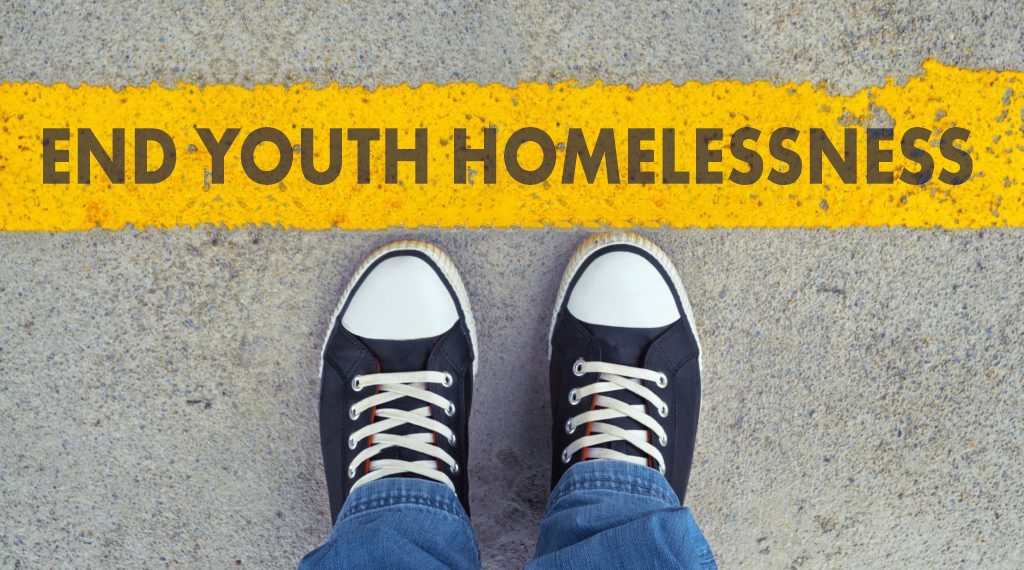One Number Deep Dive: Youth Homelessness
Mary Ann Priester
Senior Management Analyst
Mecklenburg County Community Support Services
Branden Lewis
Management Analyst
Mecklenburg County Community Support Services
Erin Nixon
Senior Social Services Manager
Mecklenburg County Community Support Services
The Housing Data Snapshot is the hub for the latest data related to housing and homelessness in Charlotte-Mecklenburg. It provides an overall count and demographics of homelessness by household type and subpopulation and highlights inflow to (Newly identified, Returns from Permanent Housing, Returns for Inactivity) and outflow from (Exit to Permanent Housing, Exit to Inactivity), homelessness.
This week’s blog post provides a deep dive into the most recent One Number update with a focus on youth homelessness and what these data mean for addressing youth homelessness in Charlotte-Mecklenburg.
YOUTH HOMELESSNESS
Each month the One Number update provides data on unaccompanied youth which are defined as single youth heads of household ages 18-24 years old who are not accompanied by any other household members. For the purpose of this blog we will provide data on the full spectrum of youth homelessness which includes not only unaccompanied youth but also parenting youth (youth heads of household ages 18-24 years old who are parenting minor children) and youth heads of household who are in multiple adult households.
YOUTH ONE NUMBER DATA
As of July 31, 2024, there are 169 youth households experiencing homelessness in Charlotte-Mecklenburg. This total includes 133 unaccompanied youth, 35 parenting youth households (totaling 97 people), and 1 multiple adults (totaling 2 people). Included in the total of 169 youth households, 2 are homeless Veterans, and 29 individuals meet the criteria for chronic homelessness.
It is important to note that youth led households are often underrepresented in the Homeless Management Information System (HMIS) which is the source for One Number data.
There are several reasons for underrepresentation of youth led households including:
- Homeless services utilization: Many youth do not access traditional homeless services such as shelters that enter data into HMIS. Safety concerns, a lack of youth specific shelters, mistrust of social service systems, and a lack of awareness of resources are all reasons youth may engage in “couch surfing” with friends or rely on informal social supports for alternative housing arrangements.
- Age-appropriate services: HMIS participating agencies may not offer services that are tailored to the specific needs of youth which results in low engagement in services by youth and thus underreporting of youth homelessness.
- Data collection challenges: Youth may be less likely to provide their personal information to the agencies they do engage with due to distrust of systems and past negative experiences.
Given these limitations, based on July 2024 One Number data, the minimum number of youth-led households experiencing homelessness right now in Charlotte-Mecklenburg is 169.
Inflow/Outflow
During July 2024, 85 youth-led households entered the homeless services system including 45 new unaccompanied youth households and 16 new parenting youth households. A household is considered “new” if they have not touched the HMIS system in the past 24 months. Fourteen unaccompanied youth households, 2 parenting youth households, and 1 multiple adult household returned from inactive status (which means they were previously exited from our community by name list due to no contact for 30 days and are now re-entering the system) and 4 parenting youth households and 3 unaccompanied youth returned to homelessness after previously exiting the homeless services system to a permanently housed situation. A total of 20 youth-led households were housed during July 2024.
Youth Characteristics
- Of the 169 youth heads of household experiencing homelessness as of July 31, 2024, 54% identify as women only, 40% identify as men only, and 4% identify as transgender or non-binary.
- Seventy-nine percent identify as Black, African American, or African only, 10% identify as White only, 6% identify as multi-racial, and 4% identify as Hispanic/Latin(a)(e)(o) only.
- Forty-four percent of youth self-reported a disability with 12% reporting a chronic health condition, 7% reporting a developmental disability, 36% reporting a mental health disorder, 6% reporting a physical disability, and 15% reporting an alcohol or drug use disorder or both.
- Thirty-three percent of youth heads of household reported being survivors of domestic violence, and 9% reported that they are currently fleeing a domestic violence situation.
- Youth most frequently reported entering the homeless services system from a place not meant for habitation (51%), a doubled-up situation (21%), and from being self-pay or doubled up in a hotel or motel (8%).
- Sixty-eight percent of youth reported having no income.
YOUTH HOMELESSNESS RISK FACTORS
In addition to examining One Number data to better understand youth homelessness, the Continuum of Care also reviews other community data sources (e.g. monthly Coordinated Entry data) to assess key risk factors identified by Chapin Hall for youth homelessness.
These risk factors include:
- Youth with less than a high school diploma or GED: 35% of youth heads of household who had a Coordinated Entry assessment in the past year reported they had less than a high school diploma or GED; 65% of unaccompanied youth who had a Coordinated Entry in the past year reported the highest grade level attained as high school diploma, GED, or at least some higher education. Charlotte-Mecklenburg Schools (CMS) graduation rate is 83%. These data suggest that youth heads of household who had a Coordinated Entry assessment in the past year graduated high school or obtained a GED at a lower rate than the overall CMS population.
- Youth with annual household income of less than $24,000: 64% of the youth heads of household reported $0 income during their coordinated entry assessment.
- Youth who identify as Black or African American: 79% of youth currently experiencing homelessness identify as Black, African American, or African only.
- Youth who identify as LGBTQ+: In November 2022 data elements on an individual’s sexual orientation/identity, pronouns, and interest in LGBTQ programming were implemented as part of the Coordinated Entry assessment. From July 2023 to June 2024, 372 youth heads of household responded to these questions; 21% identified as lesbian, gay, bi-sexual, questioning, or other identity.
- Youth who identify as Hispanic, non-White: 4% of youth currently experiencing homelessness identify as only Hispanic/Latin(a)(e)(o)
- Youth who are unmarried and parenting: 133 unmarried and parenting youth experienced homelessness from 7/1/23-6/30/24.
- Youth who have foster care or criminal justice system involvement: Among youth heads of household who had a coordinated entry housing needs assessment between July 2023 and June 2024, 31% reported that they or someone currently residing with them was formerly in the foster care system and 8% reported current or previous involvement with the criminal justice system.
YOUTH HOMELESSNESS DEMONSTRATION PROGRAM
Established in 2016, the Youth Homelessness Demonstration Program is an initiative by the United States Department of Housing and Urban Development (HUD) focused on reducing youth homelessness through targeted funding and technical assistance.
The goal of YHDP is to facilitate systemic change in local homeless services systems and create sustainable solutions through:
- Creating youth-centric solutions, services, and systems that are tailored to the unique needs of youth experiencing homelessness.
- Improving coordination and service integration to better support youth experiencing homelessness.
- Implementing strategies to prevent youth homelessness.
- Developing and implementing interventions that divert youth from entering homelessness.
- Facilitating access to stable housing and support services to ensure youth rapidly exit homelessness.
YHDP resources are awarded via a competitive funding process on an annual and bi-annual basis. In August 2024, in partnership with the Youth Advisory Board, the Charlotte-Mecklenburg Continuum of Care submitted an application to be considered for YHDP funding.
SO WHY DOES THIS MATTER?
This youth deep dive into the most recent One Number update highlights the ongoing challenges faced by youth experiencing homelessness, including unaccompanied youth, parenting youth, and those in multiple adult households. The data reveals significant disparities and barriers and the prevalence of specific risk factors among youth experiencing homelessness in Charlotte-Mecklenburg. Systemic changes, targeted interventions, and tailored solutions are needed to prevent and end youth homelessness in Charlotte-Mecklenburg. Insights from youth specific data are vital to shaping effective strategies to prevent and address youth homelessness and ensure a more equitable and supportive community for all youth.


